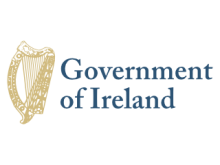European Communities (Good Agricultural Practice for Protection of Waters) (Amendment) Regulations 2011 (S.I. No. 125 of 2011).
Resource information
Resource Language
ISBN / Resource ID
LEX-FAOC103797
Pages
2
License of the resource
Copyright details
© FAO. FAO is committed to making its content freely available and encourages the use, reproduction and dissemination of the text, multimedia and data presented. Except where otherwise indicated, content may be copied, printed and downloaded for private study, research and teaching purposes, and for use in non-commercial products or services, provided that appropriate acknowledgement of FAO as the source and copyright holder is given and that FAO's endorsement of users' views, products or services is not stated or implied in any way.
These Regulations amend the European Communities (Good Agricultural Practice for Protection of Waters) Regulations 2010 in article 17 concerning distances from a waterbody to be observed in use of fertilizer so as to allow a local authority to apply a landspreading restriction to the upstream catchment area and to the close proximity downstream of an abstraction point in the case of any surface waters.
Amends: European Communities (Good Agricultural Practice for Protection of Waters) Regulations 2010 (S.I. No. 610 of 2010). (2010-12-20)



